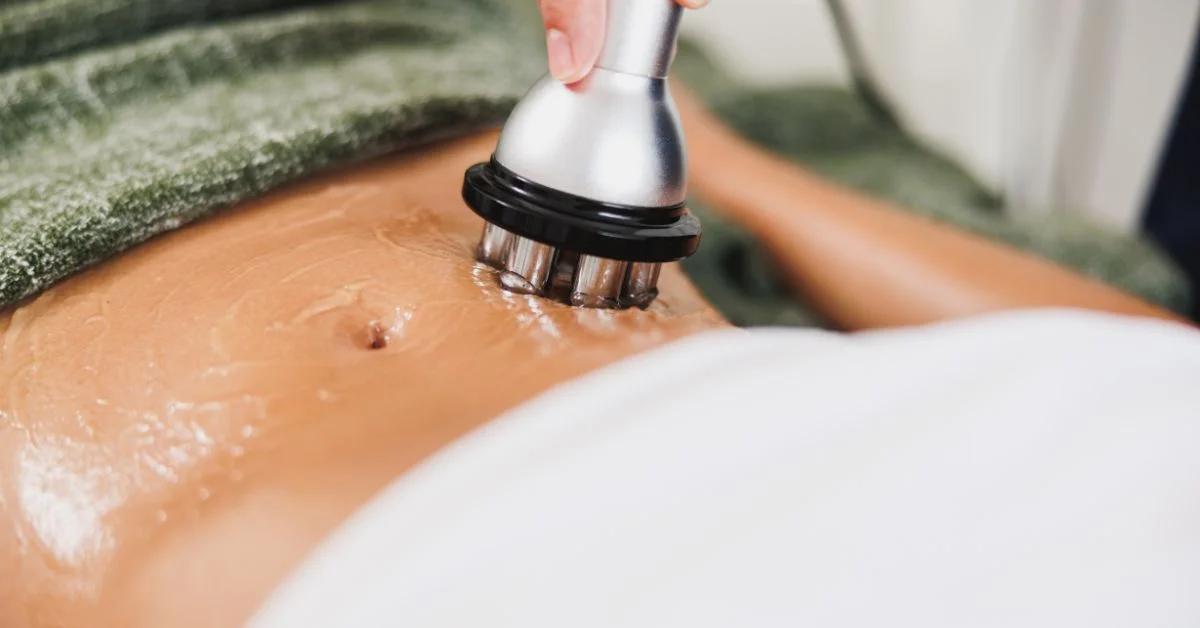The term Cellulogia can be understood as the systematic study, understanding, and management of cellulite. While cellulite is a natural part of human physiology, it is often misunderstood, stigmatized, and targeted by countless remedies and marketing claims. Cellulogia seeks to bring clarity by exploring the causes of cellulite, how it develops, the science behind it, myths that surround it, treatment options, and lifestyle choices that influence its appearance.
What Is Cellulite?
Cellulite refers to the dimpled or uneven texture of skin, commonly seen on the thighs, hips, buttocks, and abdomen. It occurs when fat deposits push through connective tissue beneath the skin, creating an irregular, lumpy appearance.
Contrary to popular belief, cellulite is not a disease, nor is it necessarily linked to obesity or poor health. It is a natural anatomical variation influenced by genetics, hormones, and lifestyle.
The Concept of Cellulogia
Cellulogia represents an approach that involves:
- Studying the origins of cellulite at the cellular and tissue levels.
- Understanding contributing factors, including biology, hormones, lifestyle, and diet.
- Correcting myths that surround cellulite.
- Exploring remedies and treatments, from natural lifestyle adjustments to modern cosmetic procedures.
- Promoting body positivity while offering realistic solutions.
It moves away from shame-driven perspectives and emphasizes knowledge, prevention, and empowerment.
Causes of Cellulite
Cellulogia identifies multiple factors behind the appearance of cellulite:
| Factor | Explanation |
|---|---|
| Genetics | Determines skin thickness, fat distribution, and tissue structure. |
| Hormones | Estrogen, insulin, thyroid hormones, and prolactin play roles in fat storage and connective tissue health. |
| Age | Aging reduces skin elasticity and collagen, making cellulite more visible. |
| Diet | High sugar and processed food diets can promote fat storage and inflammation. |
| Lifestyle | Lack of physical activity and poor circulation worsen cellulite visibility. |
| Skin Structure | Women’s connective tissues differ from men’s, making cellulite more common. |
Cellulite and Gender
Cellulogia emphasizes the gender differences in cellulite development.
- Women: More prone due to estrogen-driven fat distribution, thinner skin, and vertical connective tissue patterns that allow fat to push upward.
- Men: Less common because their connective tissue is crisscrossed, offering greater structural support.
Studies suggest 80–90% of women experience cellulite at some point, showing that it is not a flaw but a nearly universal characteristic.
Cellulite Grades
Cellulogia categorizes cellulite into stages for better understanding:
| Grade | Description |
|---|---|
| 0 | No visible cellulite, even when skin is pinched. |
| 1 | Dimpling appears when skin is pinched but not while standing normally. |
| 2 | Dimpling visible while standing but not in lying position. |
| 3 | Dimpling and lumps visible in both standing and lying positions. |
This classification helps in evaluating severity and choosing appropriate treatments.
Myths and Misconceptions
Cellulogia also addresses myths that distort perceptions of cellulite:
- Myth 1: Only overweight people have cellulite.
- Reality: Even slim individuals can have cellulite due to genetics and skin structure.
- Myth 2: Cellulite means poor health.
- Reality: It is a cosmetic concern, not a medical disorder.
- Myth 3: Creams can permanently eliminate cellulite.
- Reality: Most topical creams offer only temporary tightening or hydration.
- Myth 4: Exercise alone removes cellulite.
- Reality: Exercise improves muscle tone and circulation but does not erase cellulite completely.
- Myth 5: Only women have cellulite.
- Reality: Men can also develop cellulite, though less frequently.
By dismantling myths, Cellulogia promotes realistic expectations.
Lifestyle Strategies in Cellulogia
Since cellulite is influenced by multiple factors, lifestyle adjustments can help minimize its appearance.
Nutrition
- Eat fiber-rich foods (fruits, vegetables, whole grains).
- Reduce sugar, salt, and processed food intake.
- Stay hydrated to maintain skin elasticity.
Exercise
- Strength training to build muscle and tighten skin.
- Cardiovascular workouts for fat reduction and circulation.
- Yoga and stretching to enhance flexibility and lymphatic drainage.
Skincare
- Exfoliation improves circulation and skin texture.
- Moisturizers with caffeine or retinol can temporarily reduce dimpling.
Stress Management
- Chronic stress increases cortisol, which influences fat storage and skin health.
- Meditation, sleep, and relaxation techniques indirectly improve skin tone.
Professional Treatments in Cellulogia
Cellulogia recognizes that many people seek professional options beyond lifestyle. Treatments vary in effectiveness and cost.
| Treatment Method | Description | Effectiveness |
|---|---|---|
| Massage / Endermologie | Mechanical massage improves circulation and lymphatic drainage. | Temporary |
| Laser Therapy | Stimulates collagen and reduces fat cells. | Moderate to high |
| Radiofrequency | Uses heat to tighten skin and improve structure. | Moderate |
| Cryolipolysis | Fat-freezing technology reduces underlying fat. | Moderate |
| Subcision | Surgical procedure that cuts fibrous bands. | High |
| Topical Creams | Hydrate and temporarily tighten skin. | Low, temporary |
No treatment offers permanent elimination, but many can reduce visibility significantly.
Cellulogia and Body Positivity
Another important part of Cellulogia is acknowledging the psychological and cultural aspect of cellulite. Society often promotes unrealistic beauty standards that stigmatize cellulite, despite its near-universal presence among women.
- Body Acceptance: Recognizing cellulite as natural reduces stress and self-criticism.
- Fashion Adaptation: Choosing clothing that enhances confidence helps people embrace their bodies.
- Education: Awareness through Cellulogia helps shift the narrative from shame to empowerment.
This aspect of Cellulogia promotes mental wellbeing alongside physical care.
Prevention of Cellulite
While cellulite cannot always be prevented, its severity can be managed.
| Strategy | How It Helps |
|---|---|
| Healthy Weight | Reduces fat pressure beneath skin. |
| Regular Exercise | Tones muscles and improves circulation. |
| Balanced Diet | Prevents fat accumulation and maintains collagen. |
| Hydration | Keeps skin plump and elastic. |
| Avoid Smoking | Preserves collagen and skin elasticity. |
| Moderate Sun Exposure | Prevents premature skin aging. |
Psychological Impact of Cellulite
Cellulogia recognizes that cellulite is not just a physical condition but also has a psychological dimension. Many individuals feel self-conscious, avoid wearing swimsuits, or struggle with body image issues. By reframing cellulite as a normal anatomical feature, Cellulogia contributes to mental health, self-esteem, and social confidence.
Cellulogia and Future Research
Research continues into understanding cellulite better:
- Genetic Mapping: Identifying specific genes linked to cellulite development.
- Hormonal Influence: Exploring estrogen and other hormones in fat distribution.
- Innovative Treatments: Nanotechnology creams, stem-cell research, and bioengineering solutions.
Future developments may lead to safer, longer-lasting treatments that support both aesthetics and skin health.
Conclusion
Cellulogia is more than a study of cellulite—it is a holistic framework that combines science, lifestyle, treatment options, and body positivity. By understanding the root causes of cellulite, debunking myths, and exploring realistic strategies, individuals can make informed choices.
Rather than viewing cellulite as a flaw, Cellulogia reframes it as a natural expression of human physiology, one that can be managed but not feared. Through balanced nutrition, exercise, skincare, and, where desired, professional treatments, people can enhance both their appearance and confidence.
The key message of Cellulogia is empowerment: knowledge, acceptance, and healthy choices.
FAQs on Cellulogia
1. What does the term Cellulogia mean?
Cellulogia refers to the systematic study and approach to understanding, preventing, and managing cellulite through science and lifestyle.
2. Can cellulite be completely removed?
No treatment offers permanent removal. However, lifestyle adjustments and procedures can significantly reduce its appearance.
3. Is cellulite linked to obesity?
Not exclusively. Even slim individuals can have cellulite due to genetics, hormones, and skin structure.
4. Do cellulite creams work?
Most provide only temporary improvements in skin texture by hydrating or tightening the skin surface.
5. How can I prevent cellulite from worsening?
Maintain a healthy lifestyle with exercise, balanced diet, hydration, stress control, and avoid habits like smoking.
For more information, click here.









